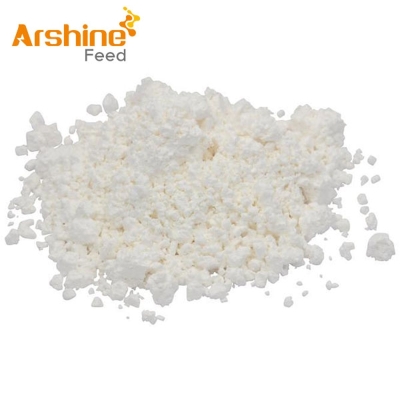-
Categories
-
Pharmaceutical Intermediates
-
Active Pharmaceutical Ingredients
-
Food Additives
- Industrial Coatings
- Agrochemicals
- Dyes and Pigments
- Surfactant
- Flavors and Fragrances
- Chemical Reagents
- Catalyst and Auxiliary
- Natural Products
- Inorganic Chemistry
-
Organic Chemistry
-
Biochemical Engineering
- Analytical Chemistry
- Cosmetic Ingredient
-
Pharmaceutical Intermediates
Promotion
ECHEMI Mall
Wholesale
Weekly Price
Exhibition
News
-
Trade Service
The latest data released by China's customs show that China's soybean imports reached 10.09 million tons in July, and the cumulative total soybean imports from January to July have reached 55.135 million tons, an increase of 17.7% over the same period last year, about 3.7 times China's domestic soybean production.
data show that the edible oil extracted from imported soybeans accounts for about 60% of China's total edible consumption, soybean meal accounts for about 80% of China's soybean meal supply - soybean meal is the main raw material of China's feed farming industry, for our daily life to provide meat, eggs and milk and other improved food.
that's what imported soybeans do.
According to statistics from a 2018 soybean import sub-enterprise, China's mainstream soybean pressing enterprises have imported soybean procurement, of which the largest procurement volume is from Yihai Kerry, followed by COFCO, 93, Bohai and other large grain enterprise groups.
, of course, if you add in the import data of soybeans from China Textile Grain and Oil and Jiabao Agriculture, which have been acquired by COFCO, COFCO should be number one.
grain storage, which has continued to put imported soybeans on the market so far this year, ranks seventh.
listed enterprises account for about 80% of China's total soybean imports, basically firmly occupy the entire soybean pressing industry system in China.
from the point of view of provincial statistics (based on the customs data of the place of enterprise registration), Beijing, which has large-scale pressing enterprises such as COFCO, COFCO and Huifu, ranked first in the statistics of sub-customs import data in 2019.
is the southern region, which has a large number of soybean crushing enterprises, including Jiangsu and Guangdong, and Shandong in the northern coastal areas.
it is worth noting that Heilongjiang Customs in 2019 import data are also at the forefront, data show that its province's large-scale pressing enterprises 93 Group, from 2004 to 2007 in Dalian, Tianjin, Guangxi, respectively, built three annual processing 1.5 million tons of factories.
according to shandong customs statistics of 2019 Shandong soybean import sub-enterprise data, the Bohai system occupies half of the mountain.
It is learned that in recent years, Shandong soybean import market, although the total amount is still ranked in the forefront of the country, but the import pattern changes dramatically, the single enterprise import scale ranking changes greatly, there have been a number of soybean import star enterprise bankruptcy reorganization, the entire soybean industry operation appears to be in decline.
July 2020, China imported 10.09 million tons of soybeans, down 1.07 million tons, or 9.6 percent, from the previous month, and 1.45 million tons, or 16.8 percent, from a year earlier, according to customs data.
the first 10 months of 2019/2020, China's soybean imports amounted to 79.14 million tons, an increase of 14.19 million tons, or 21.8%, over the same period last year.
pig production is better than expected, pig prices are high, with high breeding profits and the support of national policies, later can breed sows and pig stock will continue to rise.
although the price of poultry and eggs fell this year, breeding profits are depressed, egg and poultry breeding even showed losses, but the current meat and poultry and egg and poultry storage column is still at a historically high level.
demand for soybean meal has been positive, driving the growth of soybean meal consumption demand and pushing soybean imports to continue to increase.
January-July 2020, Brazil exported 74.18 million tons of soybeans, up from 54.66 million tons a year earlier.
According to ship-to-ship monitoring, soybean arrivals are expected to be around 10 million tons in August, about 8.5 million tons in September, and soybean imports in 2019/2020 are expected to be more than 97 million tons, up from 94.13 million tons in 2017/2018, a new record high.
as Brazil's export available for export soybeans decreased, Brazil's soybean export prices rose significantly, the price advantage of U.S. soybeans showed.
monitoring shows that U.S. Bay soybean September ship CNF quoted $404/tonne, the water discount price for CBOT September contract rose 223 cents / bushel, the combined tax price of 3235 yuan / ton (3% import duty, 9% value-added tax), compared with last week Down 40 yuan/tonne over the same period; Brazilian soybean September ship CNF quote $411/tonne, rising water price for CBOT September contract rose 246 cents/bushel, the combined tax price of 3,290 yuan/tonne, down 20 yuan/tonne from the same period last week.
Recently, Chinese companies continued to purchase U.S. soybeans, mainly in 2020/2021, and have now purchased 8.57 million tons, up from 1.94 million tons a year earlier;
demand for soybean meal increased bottom support stronger this week, domestic soybean meal spot prices continued to be weak.
August 12, the spot price of 43% protein bean meal in coastal areas was 2820 to 2920 yuan/tonne, down 80-100 yuan/tonne from the same period last week.
, 2880 to 2920 yuan / ton in North China, 2820 to 2900 yuan / ton in East China, 2820 to 2850 yuan / ton in South China.
soybean meal price trend is weak, downstream wait-and-see sentiment is stronger, spot transactions are not much.
last week, soybean crushing capacity at major domestic oil plants remained at a high of 2.04 million tons, but soybean arrivals were large and soybean stocks were basically stable.
monitoring showed that the country's major oil plants imported 6.95 million tons of commercial soybean stocks over the weekend, basically the same as the same period last week, an increase of 260,000 tons over the same period last month, a decrease of 200,000 tons from a year earlier.
soybean crushing volume remains high, soybean meal output is larger, after the early replenishment of the warehouse, feed farming enterprises to slow down the pick-up speed, soybean meal inventory rose.
On August 10, the stock of soybean meal at major domestic oil plants was 960,000 tons, an increase of 80,000 tons over the same period last week, basically the same as the same period last month, an increase of 70,000 tons over the same period last year and 180,000 tons lower than the average for the same period in the past three years.
plant opening rate will remain high until September, soybean meal stocks are expected to continue to rise.
.







